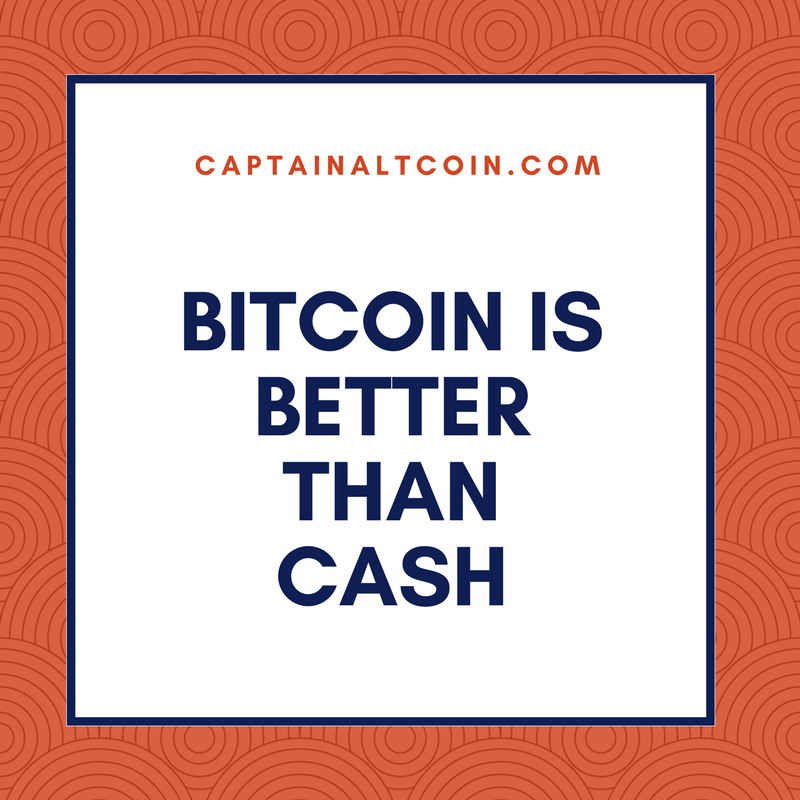
The Federal Reserve of the U.S. city of St. Louis recently issued a statement on Bitcoin compared to cash. The analysis identified three characteristics that apply to both bitcoin and cash (the US dollar): no intrinsic value, a limited offer and no intermediaries.

What you'll learn 👉
No intrinsic value
Historically, money has been a medium of exchange. The medium opens the door from a direct barter economy to an indirect barter economy. Or rather, instead of exchanging goods for each other, goods are exchanged for the medium and the medium for goods. In this function, money develops its own demand and a price (exchange rate to all goods in the economy).
A price is not the same as a value. While prices are formed in the market and are recognizable for an observer, the appreciation of the goods bought and sold is subjective and thus invisible.
An example helps to clarify: A goes to the baker and buys a pretzel for 1 dollar. This price – the euro/pretzel exchange rate – can be objectively determined. How much A actually appreciates the pretzel, however, cannot be seen by this transaction. This evaluation of the pretzel is purely psychological. The same applies to the dollar. The next buyer, for example, could be gluten-intolerant and value the one euro more than the pretzel. Or A has just eaten and can’t get a bite down, then he appreciates the dollar more than the pretzel.
At second glance it becomes clear that all appreciation is psychological and subjective. That is, there is no intrinsic value.
The statement of the St. Louis Central Bank is a tautology. The value of all goods is subjective – not only that of Bitcoin and the US dollar.
A limited supply
The Central Bank of St. Louis states that the Federal Reserve (FED) does not print physical money. The money supply of a Fiat currency is also finite.
However, the institution is missing the critical point. Because the money supply of the US dollar is by no means limited. For commodity-based currencies such as gold or bitcoin, there is a natural limit that cannot be exceeded. The limit is reached when all the world’s gold has been mined or all the bitcoin has been mined. The central banks’ monetary policy is not limited by natural circumstances. The money supply depends on the opinions of the “experts”. Accordingly, it is only finite at a given time. In other words, if one were to take a snapshot of the economy, there would be a finite money supply. In short: a central bank’s money supply knows no limits over time.
Since 1971, i.e. since the final abolition of the gold standard, the FED has been able to change the money supply at will. If the money supply is increased, the economy experiences inflation.
The comparison of the Federal Reserve St. Louis is at best misleading.
No middlemen
I agree with the St. Louis Central Bank on this point: to make a cash transaction, no third party needs to be involved. In Bitcoin this is the same thanks to the peer-to-peer construct; A can send money to B without C having to be involved.
However, Bitcoin is digital and cash is physical. This means that cash transactions can only be carried out to a limited extent – both parties must be in the same place. If you want to make a global transaction, you do need a middleman for cash.
With the monopolisation of the minting process, Fiat Cash reintroduces a middleman: the money issuer. In Bitcoin any Miner (editor) can also be a middlemen and an money issuer.
Conclusion
The explanations of the St. Louis Central Bank confuse the very essence of Bitcoin. Finally, Satoshi Nakamoto invented the crypto currency as the antithesis of the central banks’ centralized money monopoly. All values are subjective, including bitcoin, gold, pretzels and US dollars. The US dollar’s money supply is not limited, of course, but solely depends on the arbitrariness of selected experts. Bitcoin is digital peer-to-peer money and therefore global. Cash only works at local level.
I conclude that the paper cash of a central bank is inferior in its function as money to the bitcoin. The points of the Federal Reserve St. Louis are vague and unclear.






